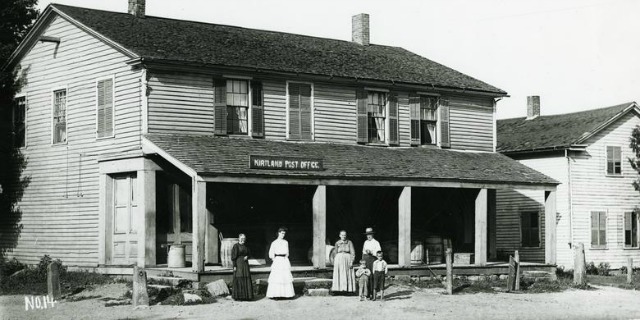Question
What is “the gift of Aaron” referred to in D&C 8:6-8?
Tim
Answer
Tim,
The Doctrine and Covenants serves as a foundational scripture for members of The Church of Jesus Christ of Latter-day Saints (The Church). It comprises revelations given to Joseph Smith, the church’s founder, and guides on doctrinal matters, church organization, and personal conduct. Unlike the Bible, which is considered a collection of sacred texts from various authors, the D&C is unique to The Church, containing modern revelations deemed essential for its members.
Revelations within the D&C address a wide array of topics, from theological doctrines to practical instructions for church governance. They are considered to be direct communications from God, intended to guide and instruct believers in their spiritual journey. The dynamic nature of revelation means that some sections, including D&C 8:6-8, have undergone revisions to clarify their meanings and applications for church members.
D&C 8:6-8 introduces the “gift of Aaron,” a term that has intrigued scholars and church members alike. To comprehend its significance, it’s essential to examine the context and the specific language used in these verses. The passage discusses various spiritual gifts and their applications within the church, emphasizing the importance of divine assistance in ministerial work.
Originally, the revelation referred to the “gift of working with the sprout,” a metaphor that conjures images of growth, renewal, and the nurturing of spiritual life. However, this phrase was later edited to “working with the rod.” This change in terminology is not merely a linguistic adjustment but reflects a deeper theological and practical shift in understanding the nature of the gift.
The “gift of Aaron” as presented in these verses underscores the role of divine guidance and the tools provided to church leaders to fulfill their duties effectively. It highlights the necessity of both spiritual and practical instruments in the administration and expansion of the church’s mission.
The alteration from “sprout” to “rod” in the revelation’s text signifies a move from a purely metaphorical representation to a more tangible and functional tool. This transition mirrors the practical needs of The Church as it navigated the challenges of growth and establishment in its early days.
A sprout symbolizes new beginnings, potential, and the nascent stages of development. In contrast, a rod represents authority, direction, and the means to effect change. This shift suggests a recognition of the need for structured leadership and the application of specific tools to manage the church’s expansion and organizational requirements.
By rephrasing the gift from a sprout to a rod, the revelation acknowledges the complexities of church administration and the necessity for divine assistance in maintaining order, guiding members, and addressing emerging challenges. It reflects a pragmatic approach to leadership, where symbolic representations are complemented by concrete instruments to facilitate effective governance.
Oliver Cowdery, a key figure in the early history of The Church of Jesus Christ of Latter-day Saints, played a significant role in the revelation and its subsequent editing. Cowdery, who served as Joseph Smith’s scribe and a prominent leader within the church, was reputed to possess the ability to channel revelations through a divining rod earlier in his life.
The use of a divining rod, traditionally associated with finding water or minerals, underscores Cowdery’s unique spiritual gifts and his contribution to the development of church doctrines. This tool, emblematic of seeking divine guidance and uncovering hidden truths, aligns with the broader themes of revelation and divine assistance emphasized in D&C 8:6-8.
Cowdery’s ability to channel revelations through such a methodical instrument may have influenced the editing of the original revelation. By transitioning from the “gift of working with the sprout” to “working with the rod,” the revelation possibly sought to align with Cowdery’s practical and spiritual methodologies. This alignment ensured that the guidance provided was both spiritually inspired and practically applicable to the church’s needs.
Moreover, Cowdery’s involvement highlights the collaborative nature of early church leadership and the importance of diverse spiritual gifts in shaping the church’s foundational doctrines. His contributions, particularly in refining and clarifying revelations, were instrumental in establishing a coherent and actionable framework for church governance and missionary work.
The “gift of Aaron” extends beyond mere administrative tools; it embodies the theological principles of divine leadership and authority within The Church of Jesus Christ of Latter-day Saints. Aaron, a prominent figure in biblical tradition, served as the first high priest of Israel and was granted specific priesthood authority. Drawing parallels between Aaron’s biblical role and the “gift of Aaron” in D&C 8:6-8 emphasizes the continuity of divine authority and the importance of ordained leadership in guiding the faithful.
In this context, the gift represents the divine endorsement and empowerment of church leaders to perform their duties effectively. It signifies a sacred trust, where leaders are not only tasked with administrative responsibilities but are also spiritually sustained to lead with wisdom and integrity. This theological foundation ensures that the church operates under principles that are believed to be divinely inspired, fostering unity and purpose among its members.
Furthermore, the gift underscores the interconnection between physical tools and spiritual authority. While the rod is a tangible instrument, its use is imbued with spiritual significance, symbolizing the leadership’s role in directing the church’s growth and safeguarding its doctrines. This blend of the material and the spiritual reflects a holistic approach to church administration, where practical measures are harmoniously integrated with divine inspiration.
In contemporary settings, the “gift of Aaron” continues to influence the structure and operations of The Church of Jesus Christ of Latter-day Saints. Church leaders interpret this gift as a mandate to utilize both spiritual and practical tools in fulfilling their responsibilities. This includes the implementation of administrative systems, the development of educational programs, and the organization of missionary efforts, all of which are seen as extensions of the divine guidance inherent in the gift.
Modern interpretations also emphasize the adaptability of this gift to address the evolving needs of the church and its members. As the church expands globally, leaders must navigate diverse cultural contexts, necessitating flexible yet divinely guided approaches to governance and community building. The “gift of Aaron” thus serves as a timeless principle, guiding leaders to balance tradition with innovation in their stewardship.
Moreover, the gift encourages individual members to recognize and cultivate their own spiritual gifts, fostering a culture of service and personal growth. By understanding the foundational role of divine assistance in leadership, members are inspired to contribute meaningfully to the church’s mission, reinforcing the interconnectedness of individual and collective efforts.
The “gift of Aaron” as referenced in D&C 8:6-8 is a multifaceted concept that encapsulates the blend of divine guidance, practical leadership, and theological continuity within The Church of Jesus Christ of Latter-day Saints. From its initial metaphorical representation to its practical application through tools like the rod, the gift underscores the essential role of ordained leaders in steering the church’s growth and maintaining its doctrinal integrity. Oliver Cowdery’s contributions highlight the collaborative and spiritually endowed nature of early church leadership, setting a precedent for future generations. Understanding the “gift of Aaron” provides invaluable insights into the church’s foundational principles and its enduring commitment to divine inspiration in all aspects of its governance and mission.
Gramps







